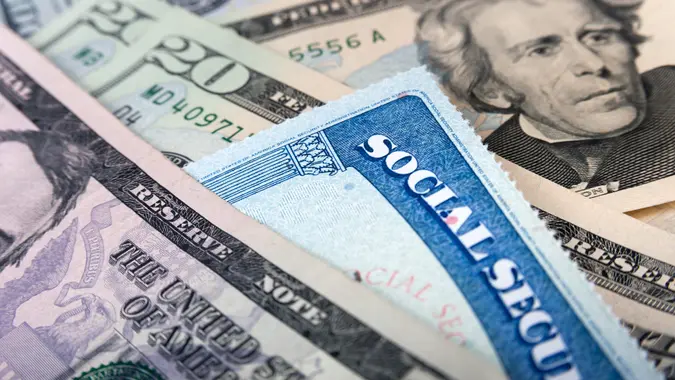Are Social Security and SSDI the Same Thing?

Commitment to Our Readers
GOBankingRates' editorial team is committed to bringing you unbiased reviews and information. We use data-driven methodologies to evaluate financial products and services - our reviews and ratings are not influenced by advertisers. You can read more about our editorial guidelines and our products and services review methodology.

20 Years
Helping You Live Richer

Reviewed
by Experts

Trusted by
Millions of Readers
The Social Security and Social Security Disability Insurance (SSDI) programs are both managed by the Social Security Administration (SSA) and provide benefits to those who are unable to work, but each program has a different purpose and unique eligibility requirements.
Social Security benefits replace a percentage of a worker’s income based on lifetime earnings. It also provides survivor benefits and income for those who become disabled. A person’s Social Security retirement benefit amount depends on lifetime earnings and when they choose to start receiving benefits. Benefits are financed through a dedicated payroll tax. Employers and employees each pay half while self-employed workers pay the entire 12.4%.
SSDI is also earned based on work earnings and funded through payroll taxes, but with the sole purpose of providing benefits to those who can no longer work due to a severe disability (and to their dependents). To qualify for SSDI, the SSA says that you must meet the definition of disability under the Social Security Act.
A person is considered disabled if they can’t work due to a severe medical condition that has lasted (or is expected to last) at least one year or result in death. The condition must also prevent them from doing work they did in the past, or from adjusting to new work. According to the SSA, SSDI recipients are typically among the most severely impaired in the country.
Similarly to Social Security benefits, SSDI only covers a portion of your income. Benefits barely keep beneficiaries above the federal poverty level. The SSA says that for most SSDI beneficiaries, monthly disability payments represent a majority of their income but can still make a big difference in terms of allowing beneficiaries to meet their most basic needs.
More From GOBankingRates
 Written by
Written by  Edited by
Edited by 
























